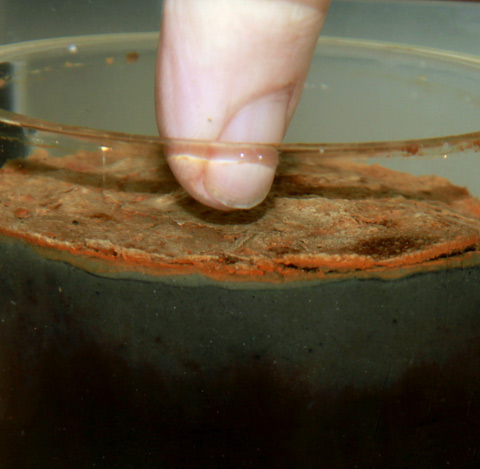Deep on the sea floor, bacterial colonies connect to each other through microscopic electrical infrastructures that could be the envy of any small town

Keeping the flow…
Do bacterial colonies found on the surface of the seabed communicate electrically with sister colonies found below the surface of the seabed?
Deep on the sea floor, bacterial colonies connect themselves through microscopic electrical infrastructures that could be the envy of any small town. Much is still unknown about the process, but if the current findings are confirmed it will revolutionize scientists' understanding of how the smallest ecosystems operate.
Oxygen-breathing bacteria that live on the sea floor have a problem. Those who sit on the ground have direct access to the oxygen in the water but not to their essential mineral nutrients, which are out of their reach, about an inch underground. At the same time, the microbes living in the soil sediment are accessible to nutrients, but lack the oxygen. How do these two groups survive?
Microbial ecologist Lars Peter Nielsen, from Eros University in Denmark concluded that the surface bacteria and subsurface bacteria somehow exchange oxygen and nutrients with each other. To find out how they do this, he and his colleagues dug up some mud from the bottom of the sediment, at a depth of 20 meters, in the Gulf of Eros and other water sources near the university and brought it to the laboratory visitor.
Next, the scientists did something they knew would cause the bacteria distress: they began removing the oxygen from the water. If the bacteria were to exchange substances among themselves, as Nielsen suspected, those living below the surface of the mud would gradually notice that their oxygen supply decreases; They will record chemical changes in the sediment that can be tracked with sensors. But instead of the expected behavior, Nielsen and his colleagues witnessed a much faster change. Almost as soon as the scientists began reducing the oxygen, the subsurface bacteria stopped consuming hydrogen sulfide from the mud. Furthermore, this cessation of metabolic activity was a sign that the bacteria in the mud realized almost immediately that something in the environment far above them had changed. The researchers also noticed that there were very rapid changes in the degree of acidity of the water in Bikar.
These reactions happened too fast to accommodate any chemical changes or molecular processes like osmosis, Nielsen says. The most likely possibility, he and his group report in the February issue of the journal Nature, is that the bacteria communicate electrically with each other, by transferring electrons back and forth. How exactly do they do this? It is still unclear, but Nielsen hypothesizes that the organisms are all connected to each other through a microscopic electronic network, perhaps made of metal grains, such as iron and manganese, found in the marine sediment.
If the wired idea turns out to be correct, it will turn the bacterial community into a crisscrossed electrical network between the sediment and the subsediment - one that stretches over 20 kilometers if we change the scale to human. Instead of receiving oxygen from the surface and turning it into energy - something the researchers say is not possible given the thickness of the muddy sediment - the bacteria embedded in the sediment simply receive energy from the grid's electrons. In response to this, they can survive while submerged and continue to send nutrients back to their fellow energy providers, through chemical movement.
Still, Nielsen says, the mystery is not fully solved and much is hidden about the way the electric grid works. "What are the electrical wires made of?" he asks. "How do they connect to the cells and to each other? And how are they built?"
Geobiologist Kent Nielson of the University of Southern California in Los Angeles agrees that the new findings "fall into the category of there-must-be-an-explanation-other-than-chemistry. The excitement now lies in finding the other mechanisms for the movement of electrons," he says.

2 תגובות
http://www.ted.com/talks/lang/eng/bonnie_bassler_on_how_bacteria_communicate.html
A colony of bacteria that exists in synergy (sharing relationships) that allows existence on the basis of specialization is the basis for creating a more complex organism that has tissues, etc.
The rapid connection between the individuals of the colony implies an electrical connection or transmission connections (radiation waves).
In my opinion, the researchers have broken a path to understanding cellular and intercellular communication that may contribute to the understanding of differentiation processes as well as the control mechanism of cell division at the tissue level. Maybe even a key to restoring damaged tissue and even to cancer.